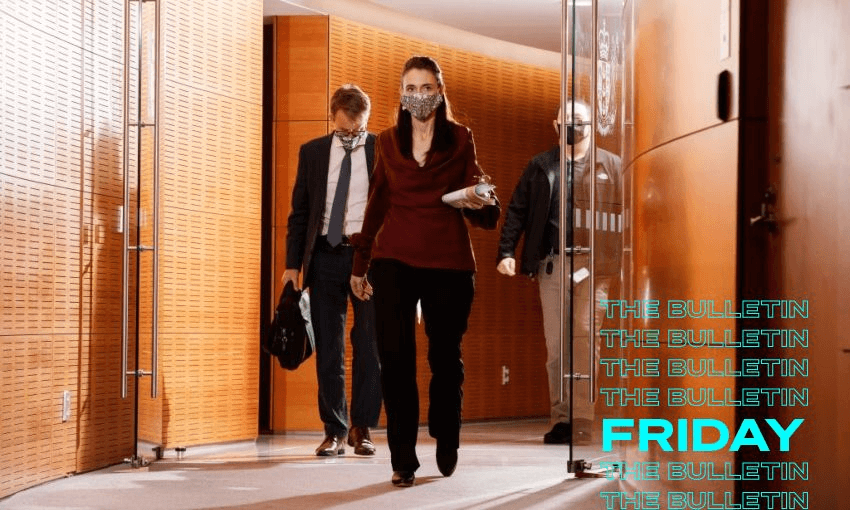Nearly everyone needs a jab to avoid more level four lockdowns, according to the government’s latest research, Justin Giovannetti writes in The Bulletin.
Vaccinations alone won’t be enough to control delta. Jacinda Ardern made the case for near universal vaccination rates yesterday as she unveiled new modelling from Te Pūnaha Matatini that suggests up to 7000 people could die annually from Covid-19 even if 80% of those aged five and over were vaccinated, according to The Spinoff’s live updates. A further 60,000 people would be hospitalised every year because of the virus, opening up questions about the impact of so many cases on the health care system and the ongoing costs of long Covid. While some experts have questioned TPM’s conclusions and called the model overly negative, it’s the clearest sign yet that some health restrictions will remain with us for years.
But jabs could mean an end to level four lockdowns. The NZ Herald reports that the prime minister has said a high vaccination rate, above 90%, would be a “golden ticket” for the country to not return to the highest levels of lockdown. With what would now be the world’s highest vaccination rate (90% of everyone over the age of five) expected deaths would drop to around 600 a year. About the same as the annual flu, but nearly triple the number of annual road deaths. The NZTA reported 224 road fatalities last year. If the country moved to a permanent state close to level two, the modelling estimates the number of Covid-19 deaths could be reduced to 50 annually.
What the future could look like. Controlling Covid-19 has been made far more difficult by the highly transmissible delta variant, where each person infected by the virus could pass it on to about six people without restrictions. The key to beating delta is bringing that number below one. The modelling suggests to get there, any vaccination programme will need to be augmented by a suite of public health measures, including mask use, better ventilation, restrictions on numbers in indoor venues and the use of vaccine certificates.
TPM assumes we’ll maintain a system of test, trace, isolate and quarantine for the foreseeable future. The pay off would be an end to hard lockdowns and a possible loosening of border restrictions. However, the group said more research was necessary to understand how cases from overseas could impact the country before relaxing the use of border facilities.
These models anticipate that most children will be vaccinated. While the Pfizer vaccine hasn’t been approved for use on children between the age of five and 12, the US government has said approval could come as early as next month there. All these projections require children to be vaccinated at the same rate as teenagers and adults. According to the ministry of health’s latest research, 20% of eligible people who have yet to be vaccinated say they aren’t likely to change their minds, half of that group says they will definitely not get a vaccine. Neither figure has budged much in months. That scenario, referenced in the first paragraph of this story, would result in 1,143,129 infections per year.
The numbers yielded by the model don’t reflect what we’ve seen overseas, an expert says. Stuff spoke with economist Rodney Jones who said the number of deaths estimated by the group are too high. Singapore, which had about an 80% vaccination rate and a similar population to New Zealand, saw 11 deaths over one month earlier this year, not the 140 weekly deaths estimated by TPM’s model. Jones, whose modelling has also been used by government, was thanked by the prime minister yesterday. We don’t need fear, Jones told Henry Cooke. “We need a positive story.”
The vaccine programme now needs to cover the whole country, especially our Māori and Pacific communities. Immunologist Dianne Sika-Paotonu from the University of Otago said this to the Science Media Centre:
“This modelling work also indicates that vaccination rates of at least 90%, together with sustainable public health measures would reduce serious illness and deaths. Vaccine coverage would need to reach across age groups, geographic locations, communities and ethnicities within Aotearoa. As has already been demonstrated, our Māori and Pacific communities remain highly vulnerable to being disproportionately affected by Covid-19 and will likely bear the heavy burden and toll of any further outbreaks.”
This is part of The Bulletin, The Spinoff’s must-read daily news wrap. To sign up for free, simply enter your email address below
